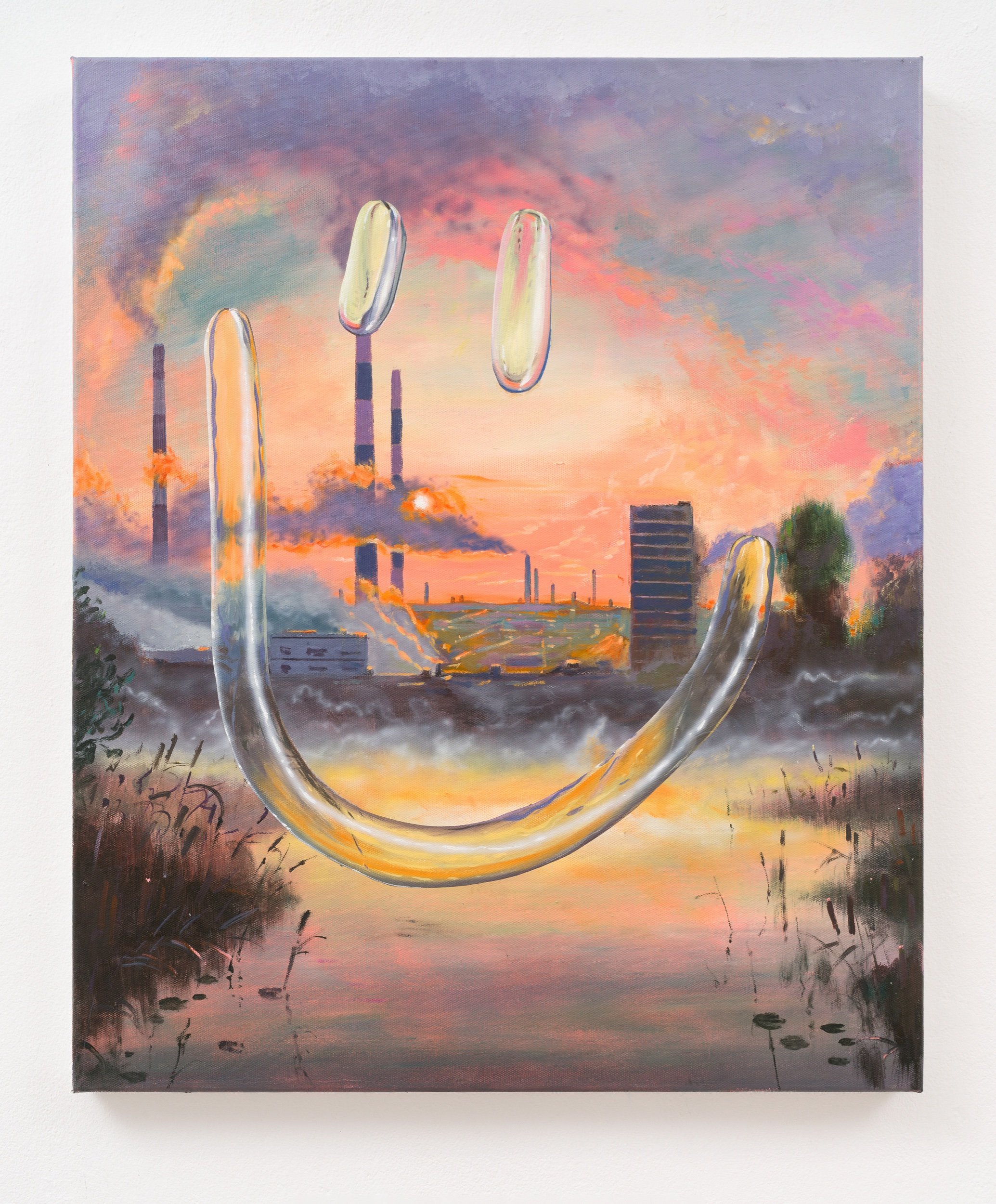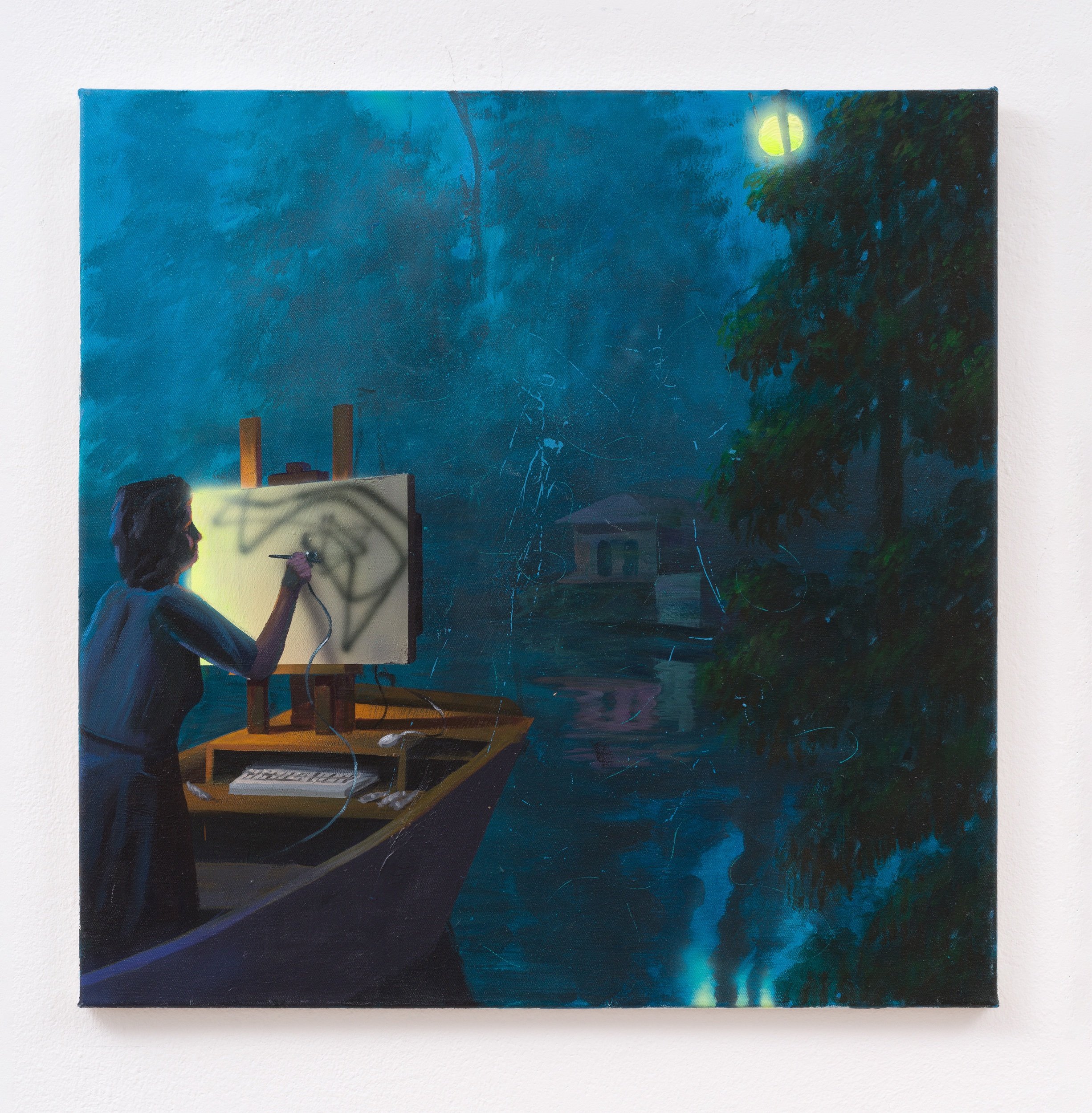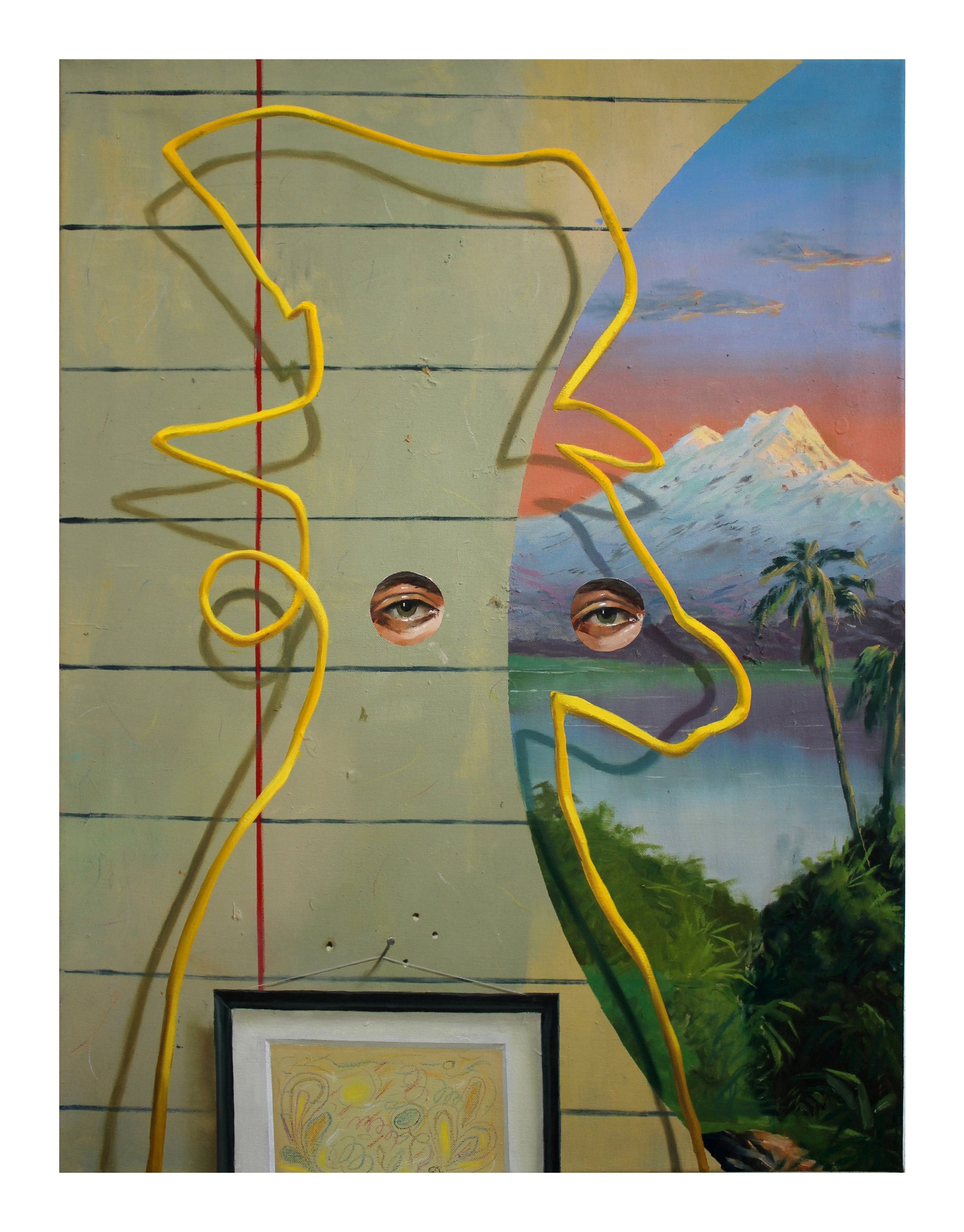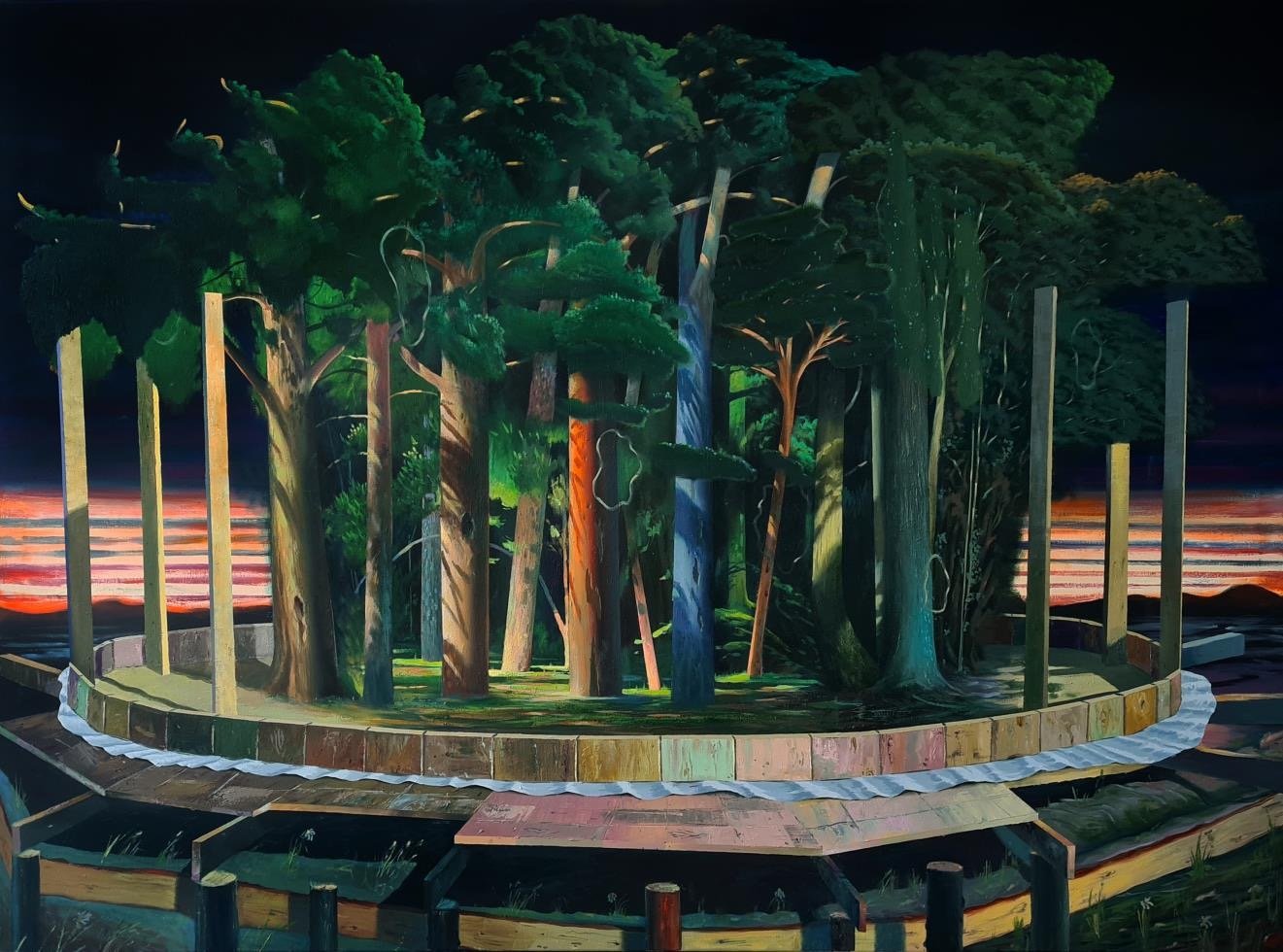Maxim Brandt

Maxim Brandt creates in his works an absurd, poetic reality that radiates an atmospheric mystery. He describes his visual worlds as poetic staging. He is moving between reality and fiction, between the present and reminiscence. Everyday motifs are deconstructed and recombined again with each other. This creates new meanings and connections between the things that often seem incomprehensive or irrational. The result of this is usually absurd, ambiguous dream images which have a self-contained logic. For each new painting he examines his own image material for usable individual elements that he puts together to form a new homogeneous 3D composition. The process of mounting is comparable to a "mise-en-scène" in the theater or to the rhyming of a poem. During the painting process he often changes colors and lighting conditions, adds new requisites or reduces the composition. This new arrangement of things means for him an absolute poetry. It expresses itself through incoherence, acausality and discontinuity.
/////
Maxim Brandt's representational paintings move on the borderline of fiction and transport the viewer into an imaginary, fairy-tale world full of dark inconsistencies and contradictions.
Inspired by the collages of the Dadaist and Surrealist Max Ernst, among others, Maxim Brandt uses computer-generated photo compositions as a template for his paintings: for each new painting, he examines existing photo material for usable individual elements, which he then assembles into a new, homogeneous photo montage. For the artist, the montage process is comparable to a "mise-en-scène" in the theater, a production by the director, or the work of a poet when writing his verses. The photo montage undergoes a further transformation when transferred to the canvas, as the artist creatively changes the colors, shapes, incidence of light and even the composition during the painting process. Maxim Brandt repeatedly throws the viewer off track, not only in terms of content but also visually, by moving compositionally on several levels of reality at the same time and playing with "dissolution of boundaries". This is also the case in the painting presented here, "Matryoshka on the Suprematist Mirror". The title is an ironic allusion to Suprematism, founded by Kazimir Malevich and others, which propagates the autonomy of pure, purposeless art. Maxim Brandt, born in 1986, spent the first years of his life in eastern Ukraine, where he came into contact not only with Ukrainian but also with Russian fairy tales. The illustrations in children's books, with their unusual colors, made a lasting impression on him.


